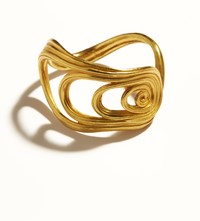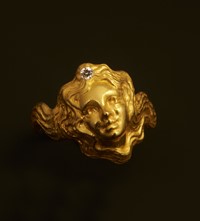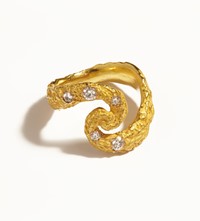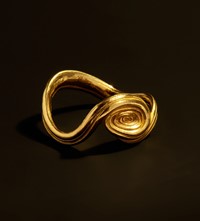Welcome to the Gilded Universe of Baroque-Punk Goldsmith Arje Griegst
- TextSusanne Madsen
As pieces from his archive go on sale at DSM London and LA, Another Man shines a light on the mischievous Dane
Imagine Ludwig II of Bavaria trying to live in an Arne Jacobsen house and you probably have a vague idea of what it must have been like to be Arje Griegst working amongst his fellow Danes. While his Mid-century contemporaries reduced lines until only the most essential remained, the late goldsmith and sculptor was a mischievous sorcerer, working in a transcendent fantasy kingdom inhabited by pearl-encrusted Pinocchios with phallic black coral noses, gold rings exploding like galactic jewel nebulas, and gilded candelabras sprouting agate eggs. In Denmark, no matter how clever and cultured you are, opulence is still pretty much the most subversive act you can commit.
“He was Baroque-Punk,” notes his son, the photographer and director Noam Griegst. While a kindred spirit like Margrethe II of Denmark was a fan early on, to the Danish press Arje Griegst was an enfant terrible, unapologetic in his gluttonous aesthetic until the end, “even though it was his biggest dream to become commercially acknowledged”, Noam Griegst says. There’s an altered reality to his work, going full throttle into the clash between the material, bodily lavishness and immaterial divinity. His pieces writhe and quiver, seemingly caught in motion or as though the gold is still dripping in its liquid form.

Some are almost mystical or trippy, like his mid-60s melting faces (think Ghostface: the surreal, hyper-precious early years), a subtle and abstract spiritual response to the decade’s psychedelia. “It was more of an inner journey than an LSD thing,” his son observes. Griegst himself felt aligned with the dark Nordic Romanticists – authors such as Karen Blixen and Hans Christian Andersen, or the filmmaker Carl Theodor Dreyer – where horror, beauty and wonder always come intertwined. “He was quite anxious and worked a lot around his nightmares. His inner demons. He was always quiet but always present in a Force Eleven. It came out through his work instead,” Noam Griegst says.
The son of a goldsmith, Arje Griegst started out as a jeweller apprentice at Just Andersen before setting up his own studio with his wife, the celebrated goldsmith Irene Griegst, going on to lecture at the Bezalel Academy in Jerusalem, and to collaborate with the likes of Georg Jensen and Royal Copenhagen. His now rare Triton tableware for the latter – swirling, undulating conches – proved much too complicated and expensive to produce, a typical example of how reality never quite lived up to his wild imagination and expectations.
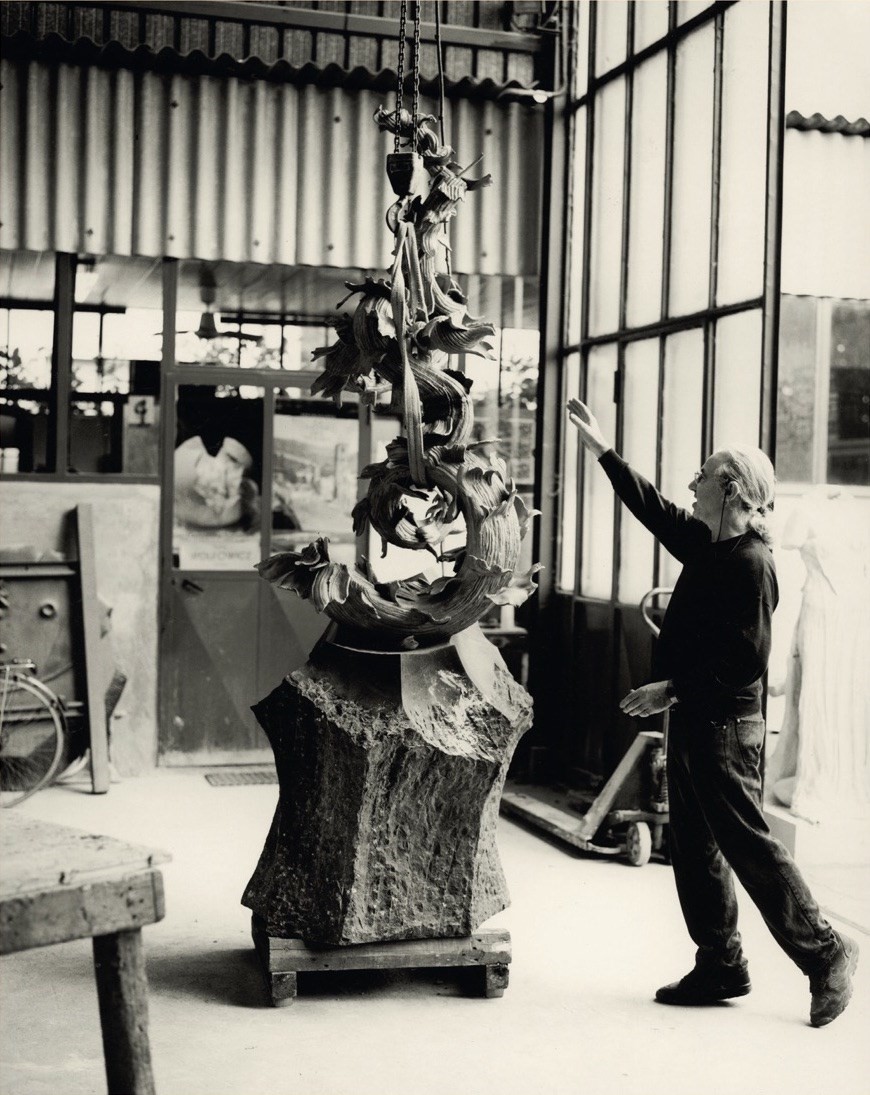
At the family home in Frederiksberg, Copenhagen, where the air was thick with cigar fumes and scented with the wax he’d use in his self-styled, souped-up cire perdue techniques, he’d blast opera on the record player – high drama to match the stormy emotions he wanted to capture in his work, exploring themes of death, sex and humour. All his life he was obsessed with Greek mythology, shaping water deity-like self-portraits in furious bronze rings. But while you can trace things like Antiquity, Gaudí, and Rococo in his work (all drawn upon with equal parts veneration and irreverence); his layered signature evades labelling. It was always about metamorphosis and one craft leading to another – jewellery, flatware, fountains, chandeliers – until Parkinson’s cruelly took away his sight and the use of his hands.
“The workshop, like our home, was like this big grotto, with precious things just casually slung everywhere – jewels, old coins, figurines,” his son recalls. It’s the kind of treasure-trove aesthetic that reverberates through fashion now, making Noam and his mother’s decision to continue the Copenhagen workshop and put things back into production across his mediums very timely, especially since there’s forever something new to discover in each piece. As Griegst himself once noted of his work: “I am in fact almost like a psychiatrist who tries to unveil a rare condition.”
Ten pieces from Arje Griegst’s archive are currently on display and for sale outside Copenhagen for the first time at DSM London and LA.
This article appeared in the S/S17 issue of Another Man.

